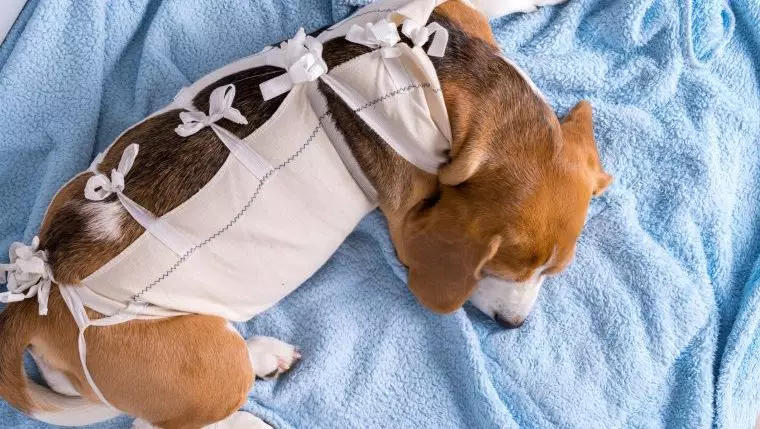When dogs undergo surgical operations, the stress of the procedure extends beyond the operating room. For pet owners, the anxiety of witnessing their beloved companions in pain or discomfort can be overwhelming. Post-operative recovery is critical, and complications such as a torn surgical site can exacerbate stress levels for both canine and human. Not only does this lead to more pain for the dog, but it can also extend recovery times and incur additional veterinary costs for repairs and medications. This is where innovative solutions like surgical recovery suits come into play, offering relief and peace of mind.
Understanding Surgical Recovery Suits
Surgical recovery suits are cleverly designed compression garments that wrap around your dog’s body, specifically tailored to protect surgical sites while ensuring comfort. Unlike traditional Elizabethan cones, which can restrict head movement and obstruct a dog’s ability to eat, drink, or play, these suits maintain mobility. They allow your dog to engage in normal activities without the bothersome encumbrance caused by more conventional methods of post-surgery protection.
These suits come in various designs and sizes, catering to different surgical sites such as those resulting from spay/neuter procedures. Their primary function is to deter the dog from licking or chewing at incisions, a behavior that could easily lead to complications like swelling, infections, or even the need for emergency vet visits.
Preventing Common Surgical Pitfalls
The aftermath of surgical procedures often involves multiple layers of sutures that support the healing process. If your dog manages to disturb these sutures, it can lead to a painful disruption and a longer recovery phase. Surgical recovery suits mitigate this risk by providing an extra layer of protection against incessant licking. The suits not only keep the area sanitary but can also soothe feelings of anxiety and restlessness that pets may feel post-surgery. In particular, the compression aspect of these suits has been shown to provide comfort, replicating a sense of security that is often lacking during the recovery period.
Initiating a discussion with your veterinarian is paramount before choosing a surgical recovery suit. Certain surgical sites may benefit more from specialized solutions, such as a donut collar, especially if circulation and air exposure are essential for healing. Your vet can guide you in selecting the most appropriate garment that fits well — snug enough to provide support, yet comfortable enough to allow freedom of movement.
Choosing Between Full Suits and Recovery Sleeves
Once you have consulted with your vet, the next step is to consider whether your dog requires a full recovery suit or just a recovery sleeve. Recovery sleeves can be ideal for procedures focused on a single limb, like ACL repairs or minor tumor removals. On the other hand, if your dog has undergone an abdominal surgery, a full-body surgical suit will better meet their needs for protective coverage.
Materials are another crucial aspect; they should be breathable to avoid overheating. An ideal fit will neither inhibit movement nor exacerbate any irritation near the surgical incision.
Acclimating Your Dog to the Recovery Suit
Transitioning your dog to wearing a recovery garment should be done gradually. Initiate this process before the surgery; allow them to wear the suit for short periods while distracting them with treats and affectionate praise. Gradually extending the time spent in the suit before the big day can significantly alleviate the anxiety tied to new experiences for your pet. This proactive approach fosters a sense of security, ensuring that your dog is comfortable not just during recovery, but also with the outfit meant to assist that recovery.
Ultimately, surgical recovery suits represent a transformative advance in post-operative care for dogs. They address several issues that arise with traditional methods, simplifying the path to a healthy recovery. Their design, comfort, and approachability offer an alternative that caters to fearful dogs and provides pet owners with that invaluable assurance that their furry friends can heal properly without unnecessary stress or pain. Regular monitoring throughout the recovery is essential, and any concerns should be promptly communicated to your veterinarian, fostering a smoother healing experience for your beloved pet.

